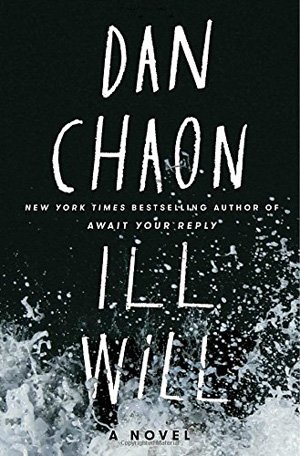
Dustin grew up part of a closeknit family in small-town western Nebraska. Two brothers had married two sisters, and Dustin was the child of one pair, and his twin cousins Wave and Kate the daughters of the other. In addition, his parents adopted a teenager, Russell Bickers, whose previous foster family died in a fire. Rusty and Dusty.
In the early 1980s, a media-fueled wave of social concern about Satanism swept over America. Rusty bathes in it. He fascinates the younger kids with claims his drug-abusing biological mother was a devil-worshipper, that he knows satanic rituals. He draws pentagrams on his schoolbooks. Black Sabbath provides the soundtrack to his life. Of more realistic concern, he sells and uses drugs and has sex with both girls.
Author Chaon well describes how inventive minds will find something to amuse them when the environment offers too little. Maybe if they’d grown up in a better place, they think. Rusty and the twins realise how suggestible the younger Dustin is. Manufacturing Dusty’s memories, putting him places he hasn’t been, including him in scenes he hasn’t observed, making him not trust his own senses and memories is an entertaining and ultimately deadly diversion.
Dustin’s parents are oblivious to all this, not above a little drug and alcohol indulgence themselves, and the siblings may be careless about which spouse they sleep with. When Dustin is 13 and the girls 17, all four parents are shot dead. Kate believes Rusty did it. Wave does not. And Dustin will say what Kate makes him believe. With so much worry about satanic cults, the teens’ testimony is sufficient to convict him. Thirty years later, DNA evidence exonerates him, and he’s released from prison. Rusty now lurks on the fiery horizon of the story like a rising sun.
Interwoven with the exploration of these past events is a narrative about mysterious present-day deaths. Dusty’s patient Aqil Ozorowski – a police officer on medical leave – is obsessed with the accidental drowning of a number of male college students. Over a period of years, young men’s bodies have been found in lakes and rivers of the Midwest, some with what Ozorowski deems significant dates of death, like 10/10/10. The authorities are frustratingly unconcerned, saying the students simply fell into the water, drunk, but Ozorowski rails at the lack of proper investigation. He struggles to convince Dustin a serial killer is at work, eventually inveigling him in some unofficial research.
Aaron scoffs at the idea of a serial killer. Then his friend Rabbit disappears, and he begins exploring the tatty fringes of the drug world. Perhaps it is author Chaon’s experience as a college professor that helps him get the voices of Aaron and Rabbit just right.
Aaron thinks his dad is a fool. The whole family mocks the ‘astral traveling’ when Dustin’s attention just… goes. Dustin suffered bouts of sleepwalking after the murders of his family, and in some respects, he still sleepwalks through life.
Chaon typographically expresses the tendency of minds to wander, through blanks in the middle of You get the idea. After a while, this technique establishes a dreamy disconnect that seems not just real, but really dangerous. The book employs several experiments in presentation. A few sections display three narratives on a page, in parallel columns (though you are nowhere near House of Leaves territory). You may find this type of thing distracting or not.
Chaon is a widely praised short story writer and was a National Book Award finalist for an early collection. Although short stories may be his preferred form, he has no trouble here sustaining interest in the actions and fates of his fascinating, flawed characters. If you tire of thrillers where the characters are no deeper than the page they’re written on, you’ll find this richly presented family a welcome change.
For another realistic five-star crime read try Denise Mina’s The Long Drop.
Ballantine Books
Print/Kindle/iBook
£13.99
CFL Rating: 5 Stars